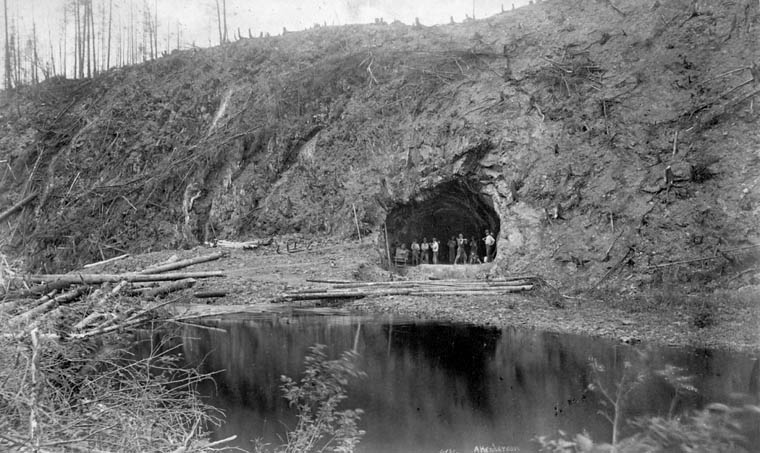Technological Progress – The Completion of the Intercolonial Railway in 1876

Photograph
Intercolonial Railway, deviation tunnel for the Tartigou River, eastern extremity, (entrance), 1871-1872
Alexander Henderson
Library and Archives Canada
Train travel was a technological leap that transformed the economy of the region. The railway changed everything. When the railway passed them by, some towns like Ste-Luce and Ste-Flavie became quiet relics until re-inventing themselves as havens for tourists decades later. Luceville and Ste-Flavie Station (the latter would change its name to Mont-Joli) were created out of nothing, the junction points for the railway fuelling the creation of townsites to serve the railway and its workers.
The Intercolonial Railway (ICR) was the most important infrastructure project undertaken by the new government of Canada. It was part of the Confederation promise to link the Maritime provinces of Nova Scotia and New Brunswick to the markets of Quebec and Ontario. Federated into a single colony by the British North America Act that came into effect on July 1, 1867, it would take nearly a decade to complete the Intercolonial. It opened for traffic in July, 1876.
Sandford Fleming was the chief engineer of the Intercolonial. Best known today as the inventor of the standard time system, Fleming designed for the ages. To span the Metis River he designed an elegant bridge whose stone piers remain unmoved nearly 150 years after they were mortared by Scottish stonemasons. He met engineering challenges with ingenuity. At the Tartigou River, Fleming had the construction crews tunnel through the rock, rerouting the river under the railway embankment to eliminate the need for a costly bridge.
A station was built at the easternmost point of the ICR line in St. Octave. From there the line snaked south to the valley of the Matapedia River into New Brunswick and on to its final destination in Halifax.

